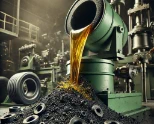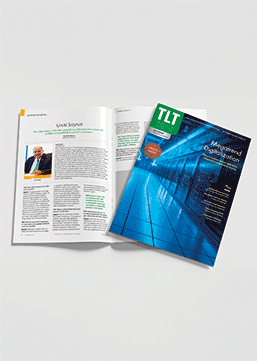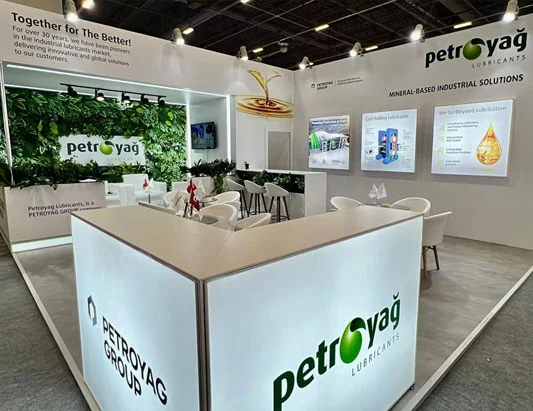What is a Lubricant?
Lubricants are invisible yet indispensable components of modern industrial processes. By reducing friction, they enable energy savings, extend the lifespan of equipment, and enhance operational efficiency. In this respect, lubricants are aptly referred to as the silent heroes of industry.
Lubricity is the ability to form a thin film between two surfaces, minimizing friction and wear by creating a smooth, slippery layer. This property contributes to the more efficient, quieter, and longer-lasting performance of mechanical systems.
What Are the General Lubrication Terms?
| Term |
Definition |
| Lubricity |
The ability of a material to reduce friction and provide slipperiness between surfaces in contact. |
| Friction |
The resistance force that prevents two surfaces from moving over each other. |
| Wear |
The material loss that occurs over time due to continuous contact or movement between surfaces. |
| Boundary Lubrication |
A lubrication regime where a thin film of lubricant is formed between surfaces, but direct contact between them is not completely eliminated. |
| Hydrodynamic Lubrication |
A lubrication regime where a full film of lubricant is formed between surfaces, preventing any direct contact. |
| Elastohydrodynamic Lubrication-EHL |
A lubrication regime that occurs under high pressure and elastic deformation of contact surfaces, creating a special hydrodynamic film. |
| Mixed Lubrication |
A lubrication regime in which both boundary and hydrodynamic lubrication characteristics coexist. |
What Are the Chemical Terms Related to Lubricants?
| Additive |
They are chemical compounds added to the formulation to enhance the performance characteristics of the lubricant. |
| Anti-Wear Additive |
Additives used to reduce wear and extend equipment life (e.g., ZDDP – Zinc dialkyldithiophosphate). |
| Friction Modifier |
Additives used to reduce friction between surfaces and improve energy efficiency. |
| Viscosity |
The resistance of a lubricant to flow. It is a key physical property that indicates how thick or thin the lubricant is. |
| Viscosity Index |
A numerical index that indicates how stable a lubricant’s viscosity remains with changes in temperature. |
| Shear Stability |
The ability of a lubricant to maintain its viscosity and performance under mechanical stress (e.g., in gearboxes or pumps). |

What Are the General Application Areas of Lubricants?
- Oils and Fluids: This product group is widely used in various fields, from motor vehicles to industrial equipment, production lines to bioengineering applications.
- Fuels
- Chemical Additives
- Metals and Other Materials
- Products in the Food and Bioengineering Sectors
- Automotive and Industrial Applications
What Happens in a World Without Lubricants?
- Factories would produce scrap instead of products. Machines and moving systems would stop functioning.
- Where friction begins, efficiency ends—wear, energy loss, and breakdowns become inevitable.
- A single missing drop of lubricant can stop an entire gear from turning.
Lubricants, which are critical to the continuity of industrial processes, are the invisible yet indispensable force that keeps the wheels of industry turning.


















